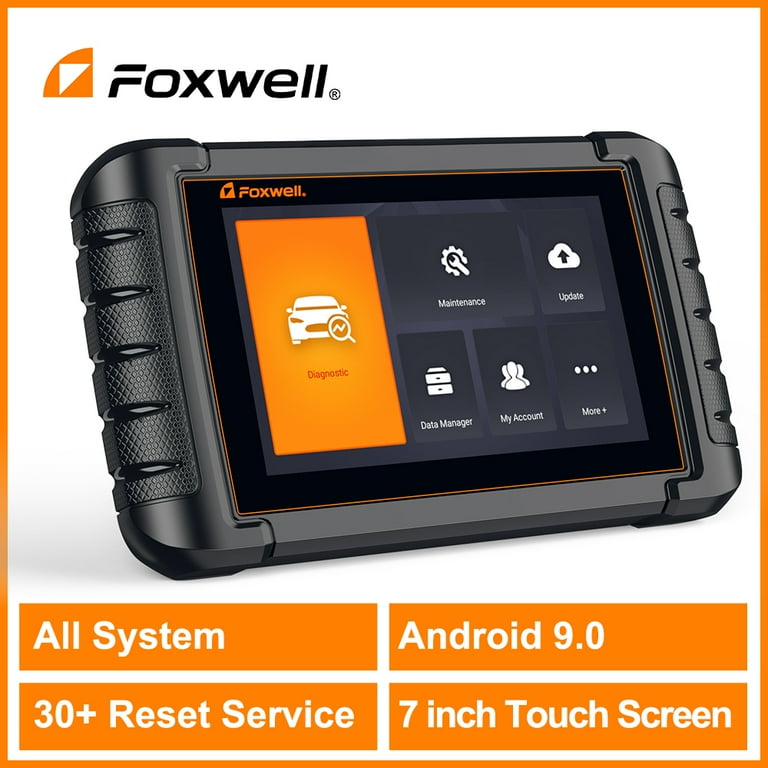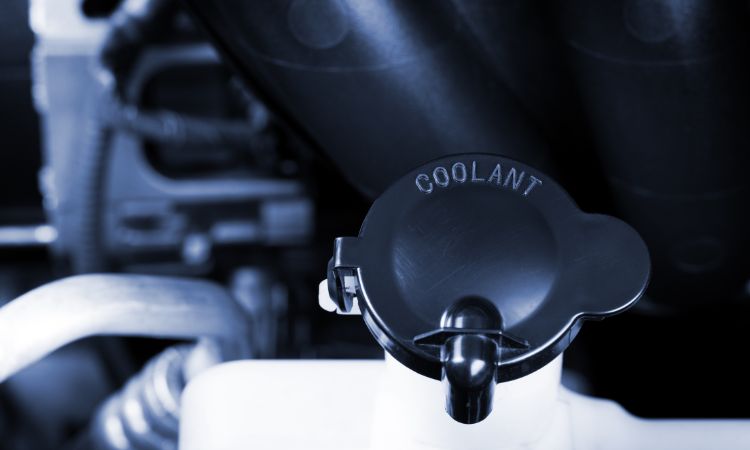Why Do Car Diagnostic Codes Matter?
Car diagnostic codes matter because they provide crucial information about the health and performance of your vehicle. When your car’s diagnostic system detects a problem, it generates a code that helps mechanics identify the specific issue and initiate necessary repairs.
These codes act as a roadmap, guiding technicians to the root cause of any malfunctions and ensuring accurate and efficient solutions. By understanding and addressing these codes, you can prevent further damage and maintain the optimal functioning of your car.
So, having knowledge about car diagnostic codes is essential for the longevity and reliability of your vehicle.
The Importance Of Car Diagnostic Codes
Car diagnostic codes are crucial for identifying vehicle issues and preventing further damage.
Identifying Vehicle Issues
Car diagnostic codes help pinpoint specific problems in your vehicle quickly.
- Codes can reveal issues like engine misfires, faulty sensors, or low fluid levels.
- This speeds up the repair process and ensures the exact problem is addressed.
Preventing Further Damage
Early detection through diagnostic codes can prevent minor issues from escalating.
- Timely repairs based on codes can prevent costly breakdowns later on.
- By addressing issues promptly, you can extend the lifespan of your vehicle.

Credit: www.amazon.com
Understanding Car Diagnostic Codes
Understanding car diagnostic codes is crucial for any car owner or enthusiast. These codes provide valuable insights into the health and performance of your vehicle, helping you identify and solve potential problems before they worsen. In this section, we will explore what car diagnostic codes are and the role of OBD-II systems in generating these codes.
What Are Car Diagnostic Codes?
Car diagnostic codes, also known as trouble codes or fault codes, are alphanumeric sequences that indicate specific issues within your vehicle’s systems. These codes are generated by the onboard diagnostics (OBD) system, which continuously monitors various components and sensors in your car.
When a problem occurs, such as a malfunctioning sensor or a faulty engine part, the OBD system detects it and generates a corresponding diagnostic code. These codes act as a language that your car’s onboard computer speaks to communicate the nature of the problem.
Diagnostic codes are typically standardized across different vehicles and manufacturers. This means that regardless of the make or model of your car, the codes will have the same meanings, making it easier for mechanics and technicians to diagnose and fix issues.
The Role Of Obd-ii Systems
The OBD-II system, which stands for Onboard Diagnostics II, is a standardized system implemented in most cars manufactured after 1996. It replaced the earlier OBD-I system, bringing about significant improvements in diagnostic capabilities.
The OBD-II system consists of various sensors and components that continuously monitor your car’s performance and emissions. These include the engine, exhaust system, fuel system, ignition system, and more. The system collects data from these components and generates diagnostic codes whenever it detects a problem.
One of the key benefits of the OBD-II system is its ability to store both current and pending diagnostic codes. Current codes represent ongoing issues that need immediate attention, while pending codes indicate potential problems that have not yet developed into full-fledged malfunctions.
By retrieving and analyzing these codes using a scan tool or OBD-II reader, you can gain valuable insights into the specific issues affecting your vehicle. This information can help you pinpoint the source of the problem, allowing you to make informed decisions regarding repairs and maintenance.
Moreover, car diagnostic codes can save you time and money by avoiding unnecessary repairs. Instead of relying on guesswork or trial-and-error methods, you can narrow down the root cause of a problem using the codes. This helps you approach the repair process with precision, addressing only the faulty components and eliminating potential guesswork.
In conclusion, understanding car diagnostic codes is essential for anyone who wants to keep their vehicle in optimal condition. It empowers you to make informed decisions, prevent potential issues from escalating, and save time and money on repairs. By familiarizing yourself with these codes and their meanings, you can become a more knowledgeable car owner and ensure the longevity and efficiency of your vehicle.
Interpreting And Resolving Diagnostic Codes
Diagnostic codes in cars are essential as they pinpoint underlying issues, making troubleshooting more efficient. Interpreting these codes is vital for diagnosing and resolving potential problems before they escalate. By understanding car diagnostic codes, you can address issues promptly and prevent major repairs down the line.
When your car’s check engine light illuminates, it’s often accompanied by a sense of anxiety and uncertainty. However, with a little knowledge about diagnostic trouble codes (DTCs), you can understand what might be wrong with your vehicle and take the necessary steps to address the issue. DTCs are alphanumeric codes that your car’s onboard computer system generates to indicate a specific problem or malfunction. Each code corresponds to a particular issue, allowing mechanics and car owners to pinpoint the problems accurately.
The format of a DTC typically consists of a letter followed by four digits. While the first digit represents a generic category, such as an engine or transmission problem, the following digits provide more specific information. These codes can be retrieved using an OBD-II scanner or code reader, making it possible to access real-time data from your vehicle’s computer system.
Once you have obtained the relevant diagnostic codes, the next step is to interpret them correctly. Each code provides valuable information, ranging from the severity of the problem to the specific component or system that requires attention. Understanding these codes empowers you to make informed decisions regarding the next course of action, whether it involves seeking professional help or attempting to resolve the issue yourself.
Common error codes often relate to issues such as a faulty oxygen sensor, malfunctioning catalytic converter, or loose gas cap. By understanding these codes, you can determine the seriousness of the problem and take appropriate measures to prevent further damage to your car.
Resolving diagnostic codes can be as simple as tightening a loose gas cap or replacing a worn-out spark plug. However, more complex issues may require the expertise of a professional mechanic. Nevertheless, with a basic understanding of diagnostic codes, you can have meaningful conversations with mechanics and avoid unnecessary repairs or expenses.
By correctly interpreting and resolving diagnostic codes, you can save time, money, and the frustration that comes with car troubles. Understanding the language of DTCs empowers you to become a proactive car owner, ensuring that your vehicle runs smoothly and minimizing the risk of experiencing unexpected breakdowns. So next time your check engine light comes on, don’t panic – let the diagnostic codes guide you towards an efficient resolution.

Credit: www.ebay.com
Benefits Of Using Diagnostic Codes
Car diagnostic codes play a crucial role in ensuring the smooth functioning of your vehicle. By utilizing these codes, you can easily identify and address issues before they escalate, ultimately saving you time and money in the long run.
Cost-effective Maintenance
Diagnostic codes enable efficient detection of problems, facilitating timely maintenance that prevents costly repairs later on.
- Allows for early identification of issues
- Helps in prioritizing repairs based on severity
- Reduces the likelihood of unexpected breakdowns
Efficient Troubleshooting
Through the use of diagnostic codes, determining the root cause of car problems becomes simpler and faster, streamlining the repair process for mechanics and vehicle owners alike.
- Enables pinpointing specific issues
- Facilitates accurate problem diagnosis
- Speeds up the resolution of mechanical issues
The Future Of Car Diagnostic Technology
The Future of Car Diagnostic Technology
Advancements In Obd Systems
Over the years, advancements in car diagnostic technology have revolutionized the way vehicles are maintained and monitored. One of the most significant developments has been the evolution of On-Board Diagnostics (OBD) systems. Modern OBD systems are now equipped with the ability to monitor a wide range of parameters, helping to diagnose and pinpoint issues with greater precision. These advancements have made car diagnostics more efficient and effective, enabling mechanics to quickly identify and resolve potential problems before they escalate.
Integration With Vehicle Telematics
With the rise of vehicle telematics, the integration of car diagnostic codes with telematics systems has become a game-changer. This integration enables real-time monitoring of a vehicle’s performance and health, providing drivers and fleet managers with valuable insights into the condition of their vehicles. The seamless integration of diagnostic data with telematics not only enhances the safety and reliability of vehicles but also plays a crucial role in optimizing maintenance schedules and reducing overall downtime.

Credit: www.walmart.com
Frequently Asked Questions For Why Do Car Diagnostic Codes Matter?
What Is The Purpose Of Accessing Diagnostic Codes?
Accessing diagnostic codes helps identify and troubleshoot vehicle issues quickly for effective repairs.
Will A Code Reader Tell Me Whats Wrong With My Car?
A code reader can help identify the problem with your car by reading the diagnostic trouble codes.
How Accurate Are Car Code Readers?
Car code readers are generally accurate when it comes to diagnosing basic issues with your vehicle’s systems. However, for more complex problems, it’s best to consult a professional mechanic. Keep in mind that the accuracy of the code reader can also depend on the brand and quality of the device.
Can A Dealership See If You Cleared Codes?
Dealerships can see if you cleared codes during a diagnostic check on your vehicle.
Conclusion
Understanding car diagnostic codes is crucial for timely vehicle maintenance and better performance. By decoding these messages, you can address issues proactively, saving time and money in the long run. Embracing the significance of diagnostic codes enhances your driving experience and ensures a safer journey on the road.

